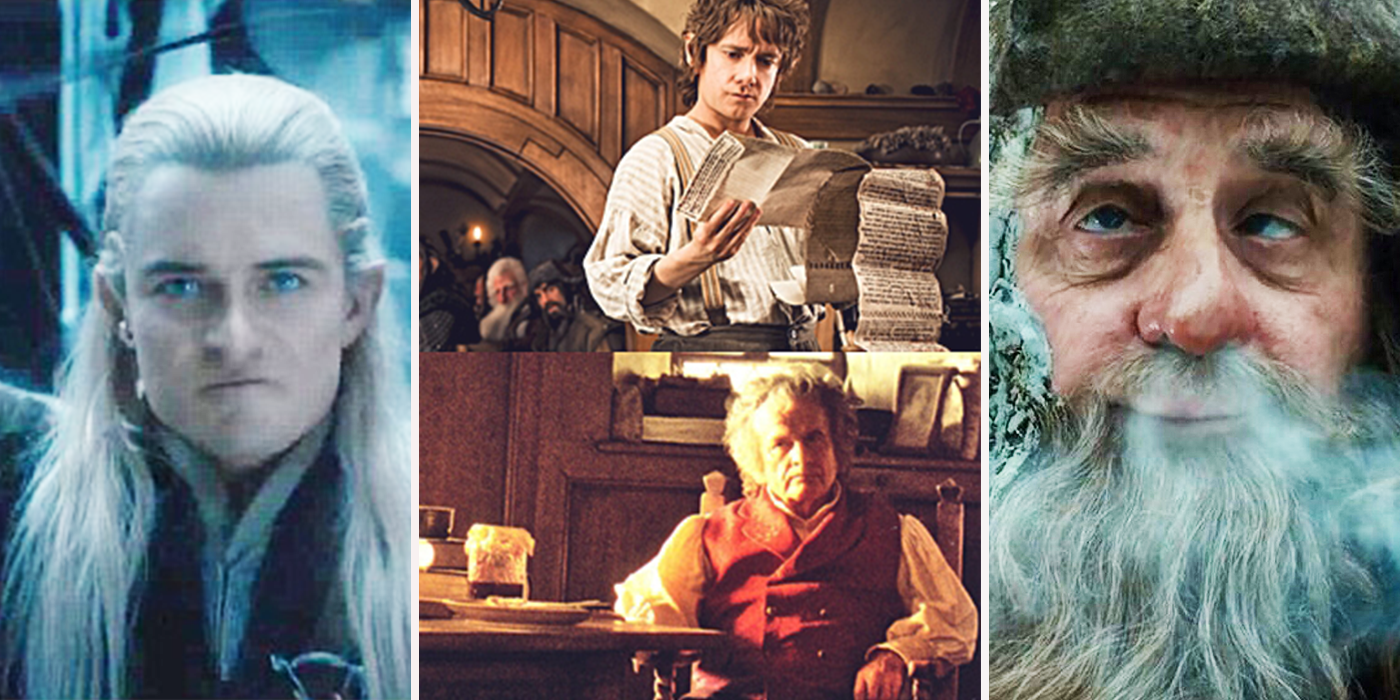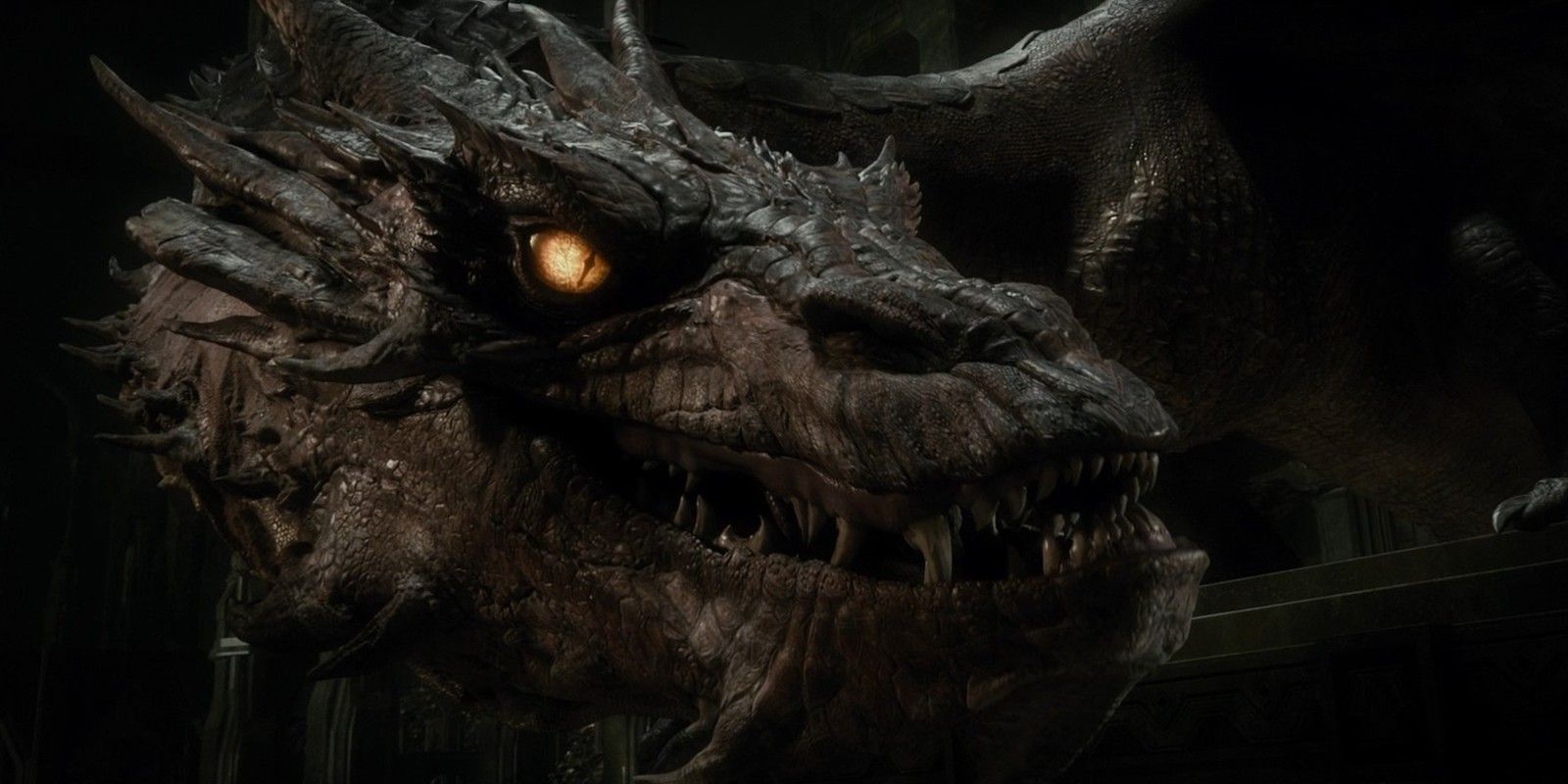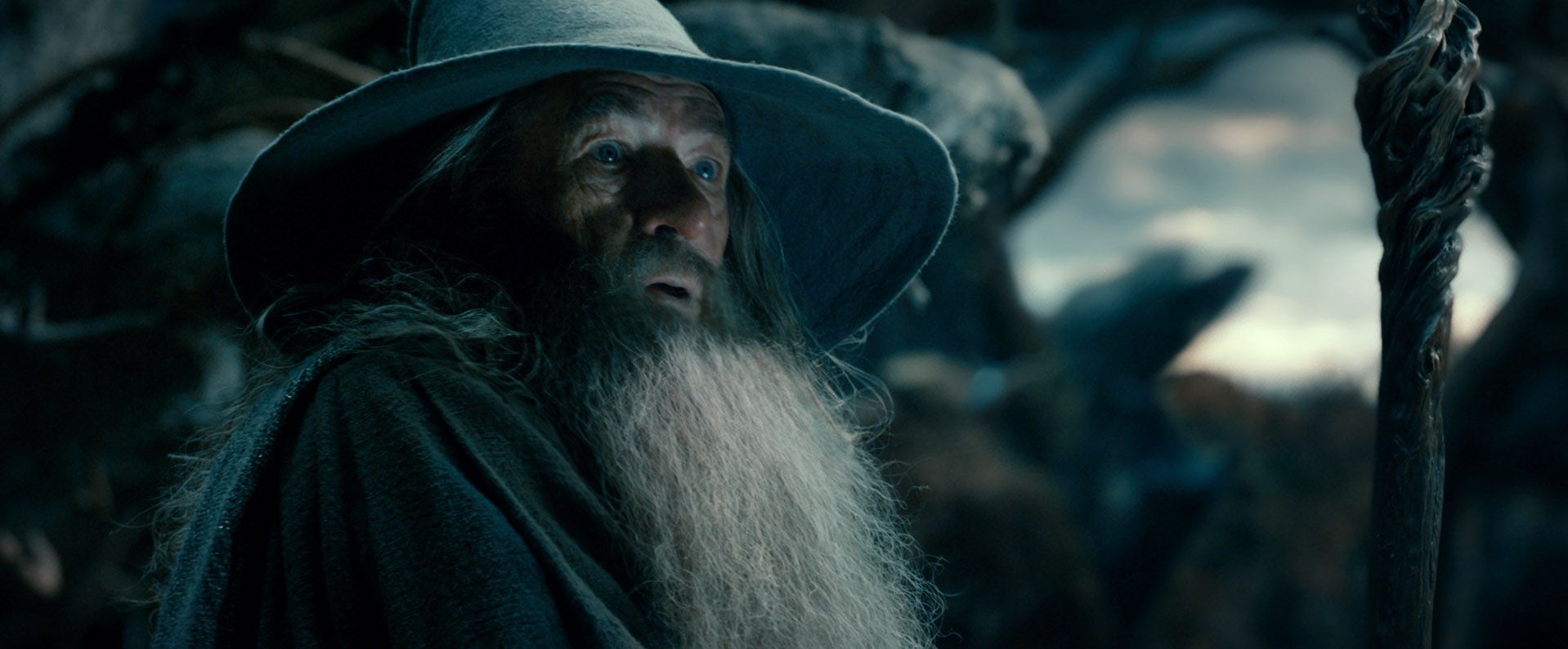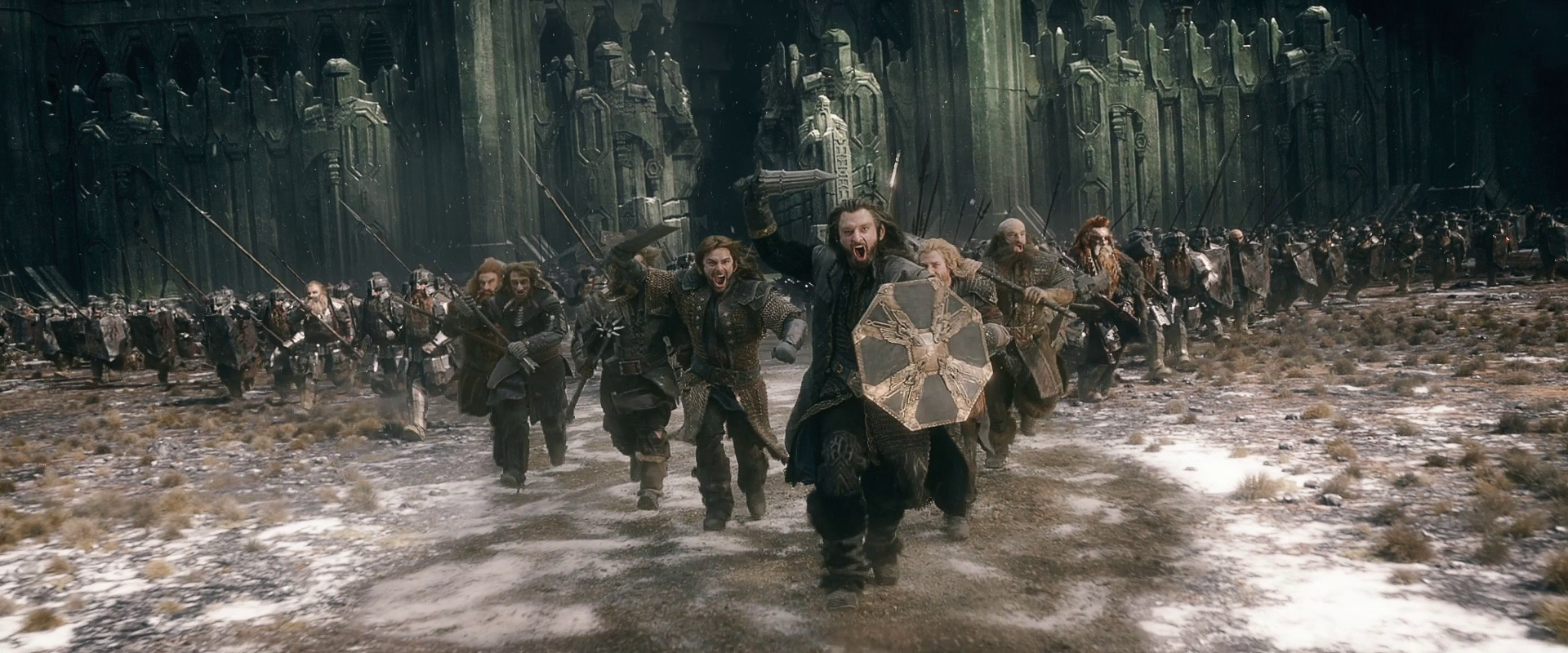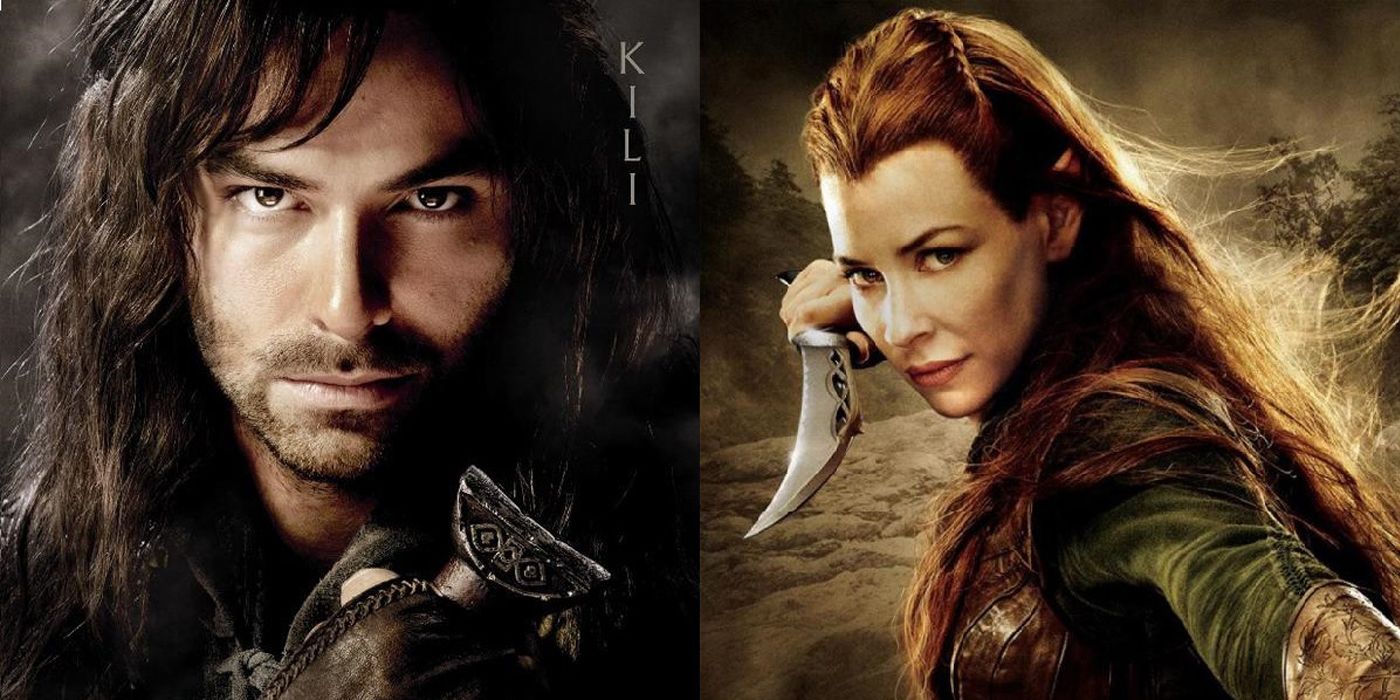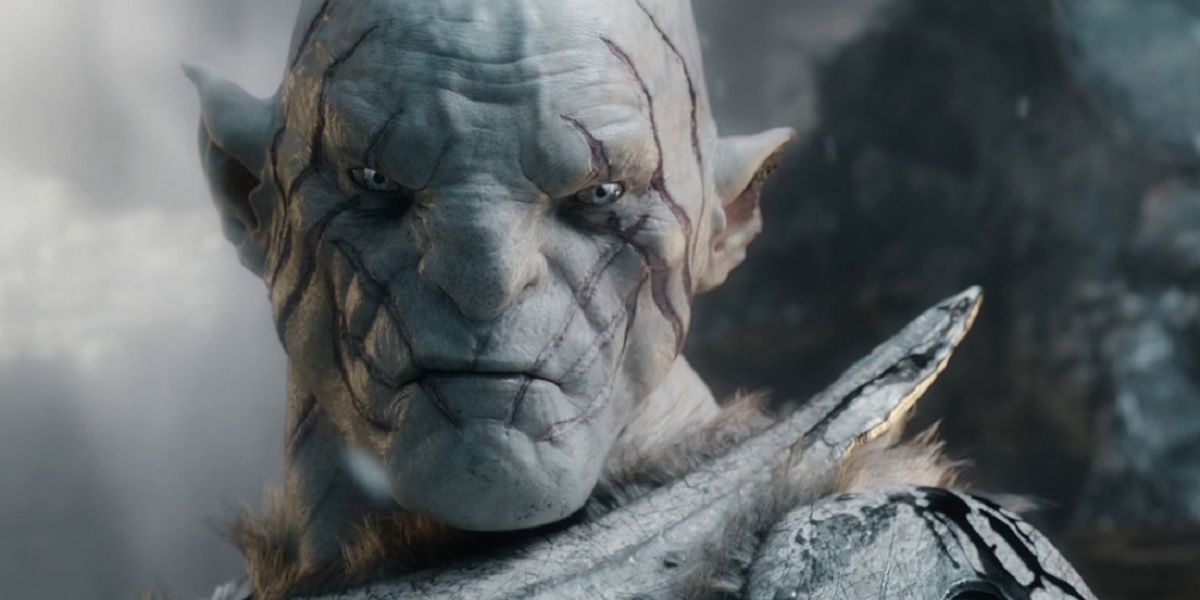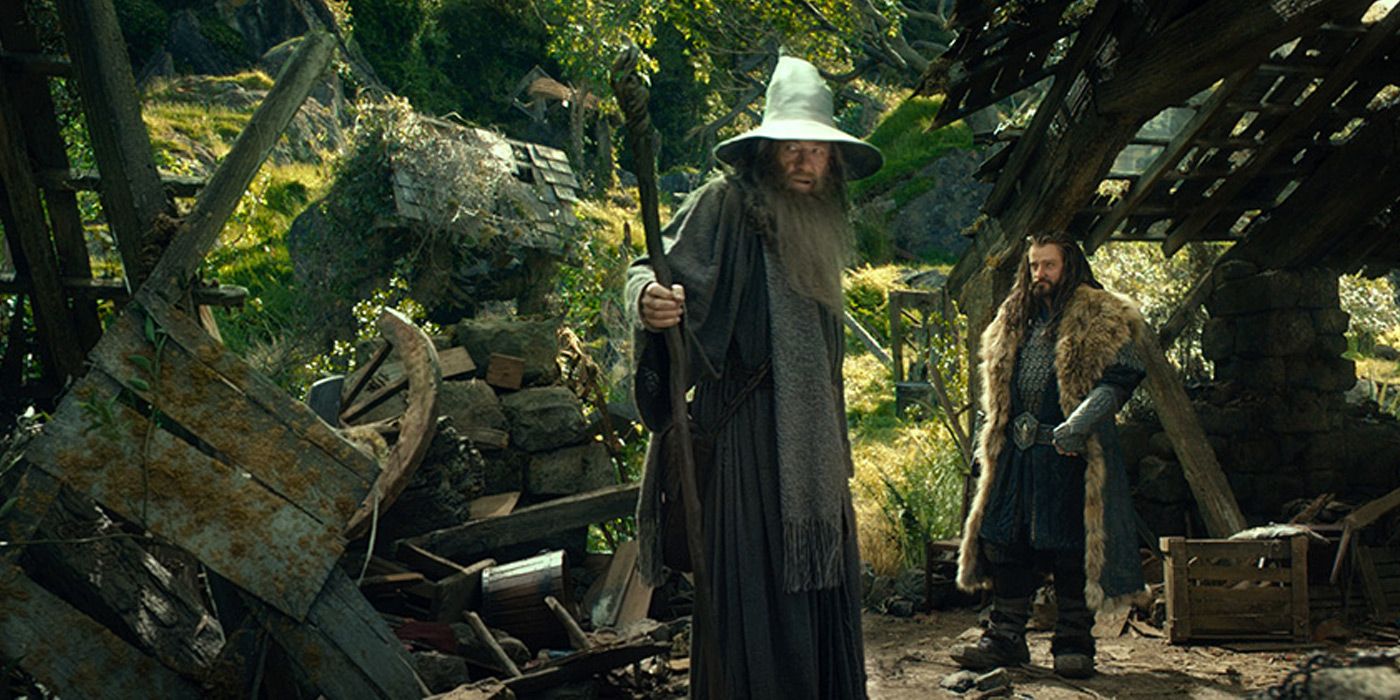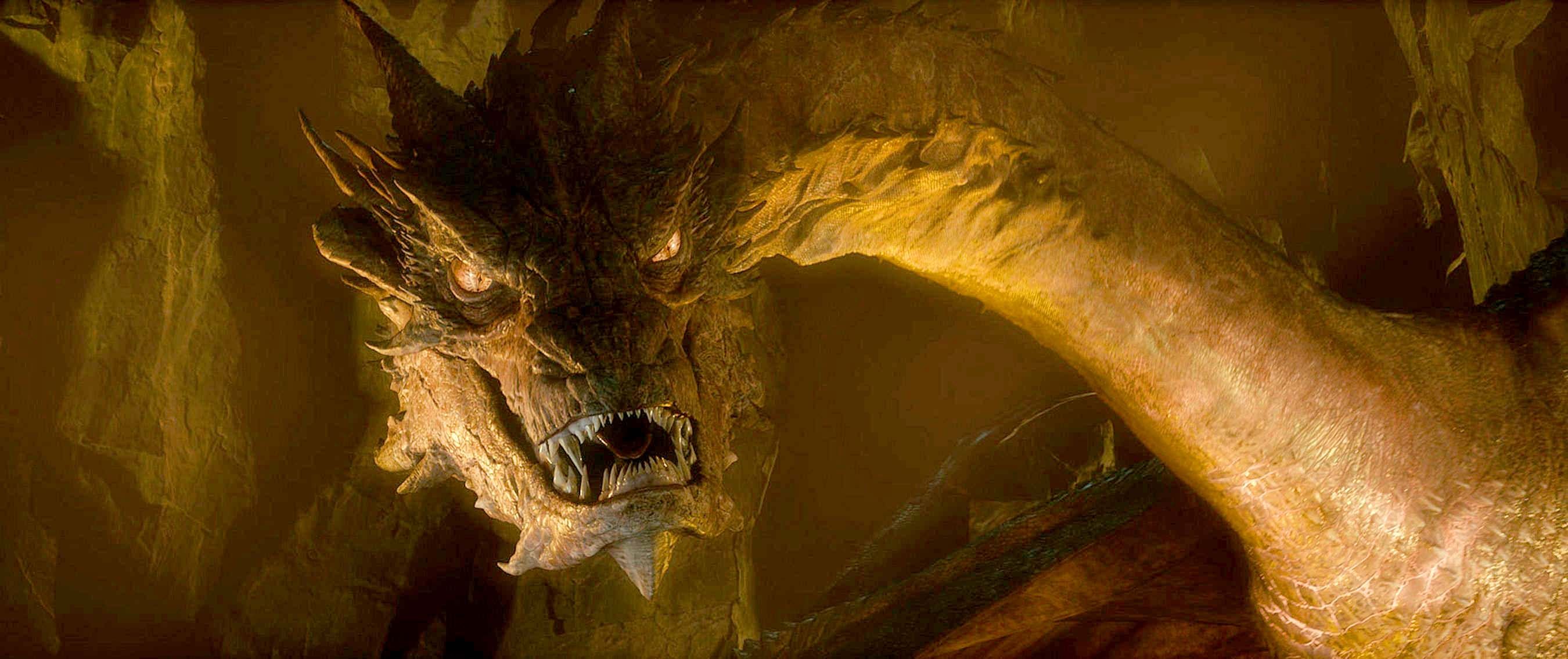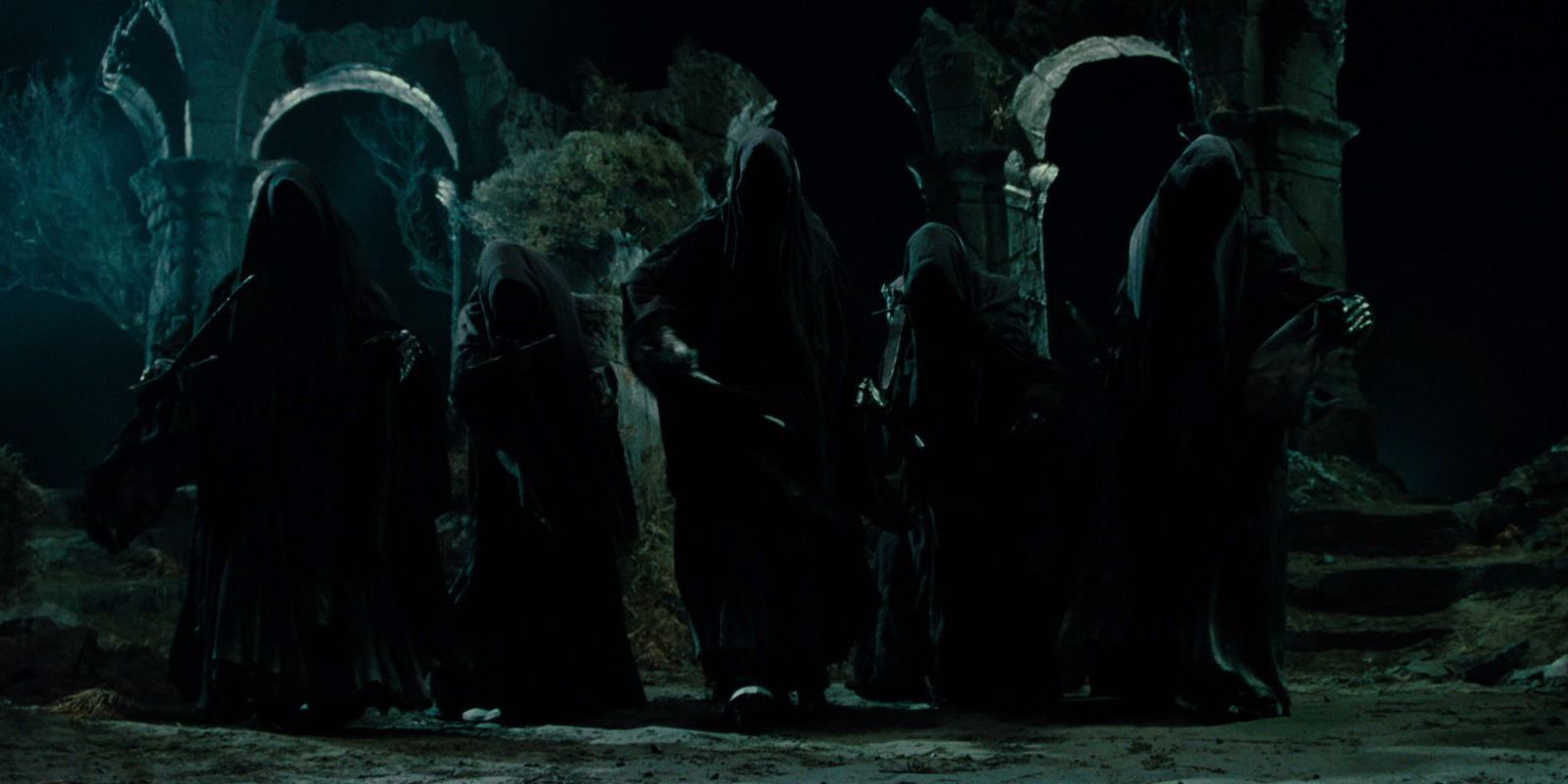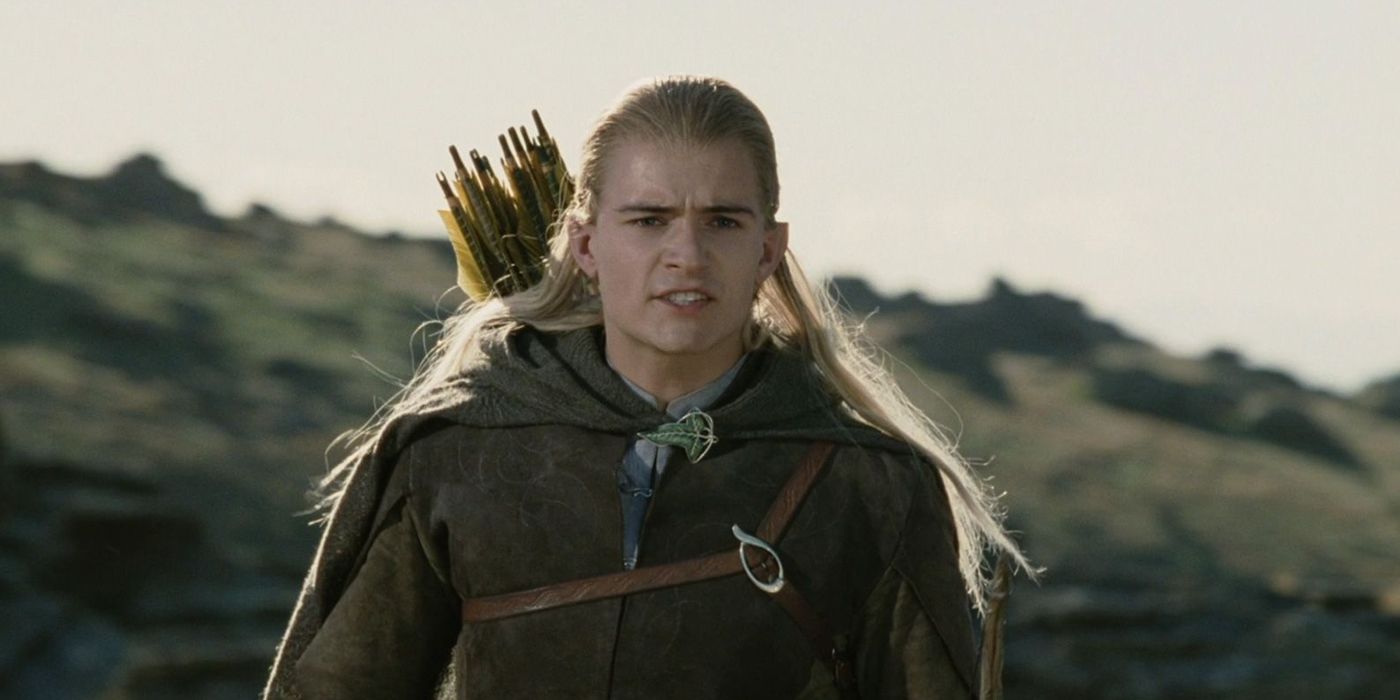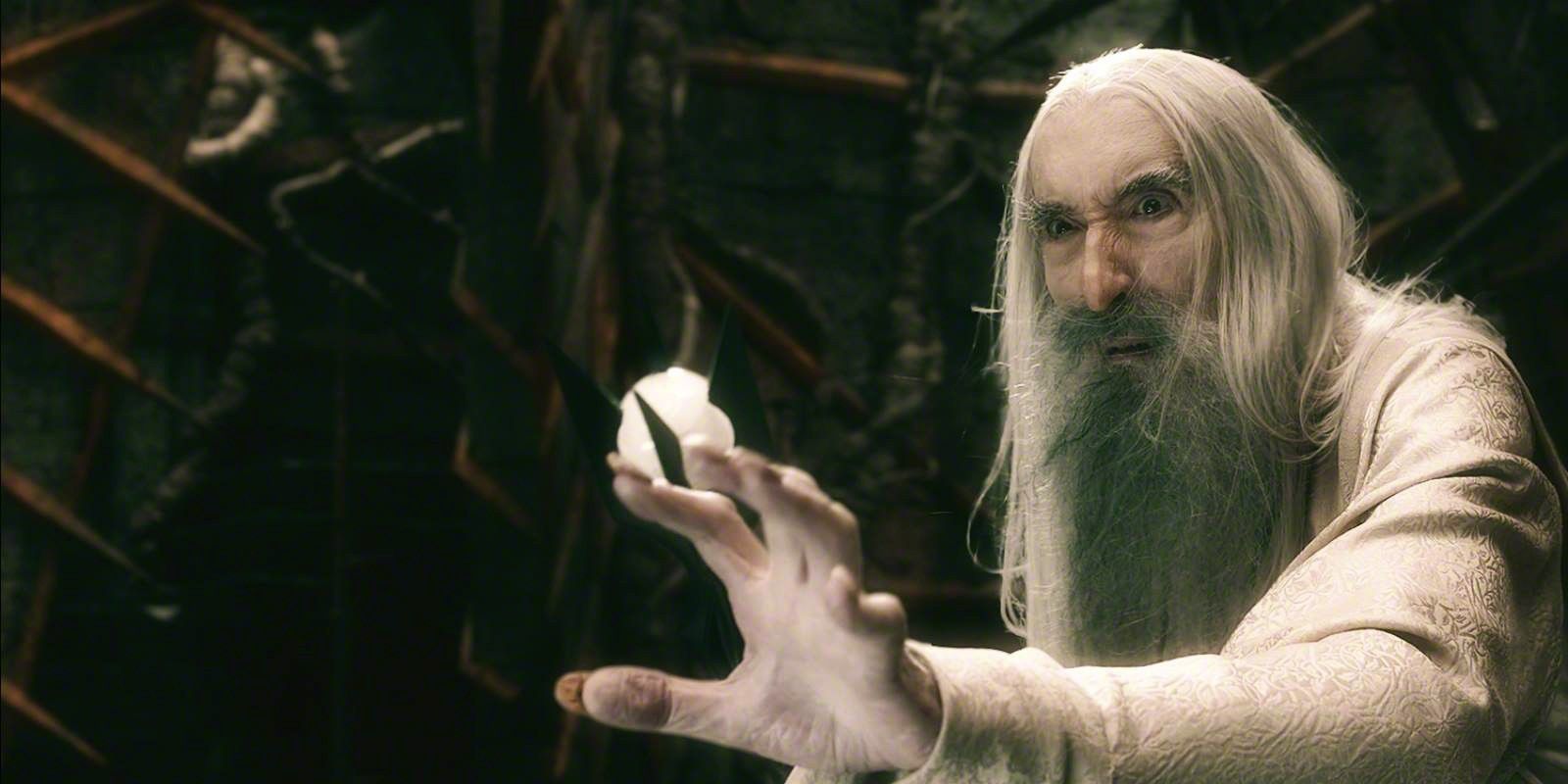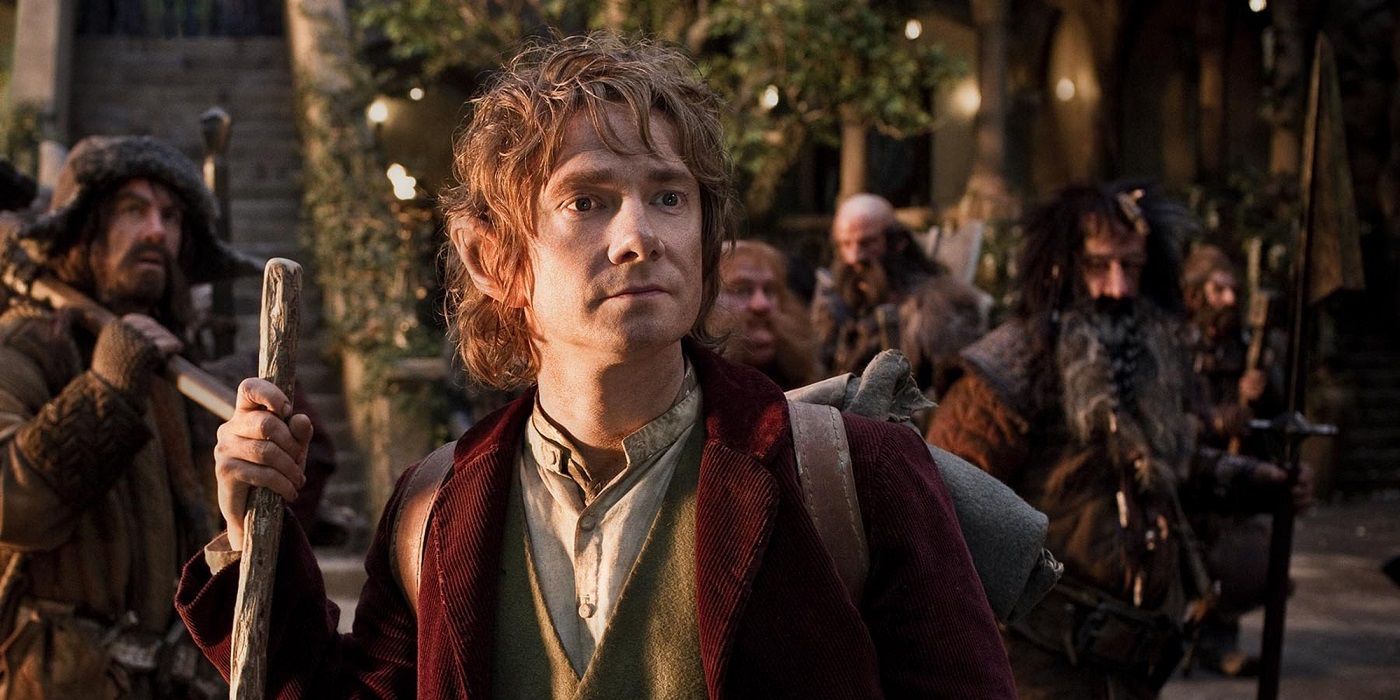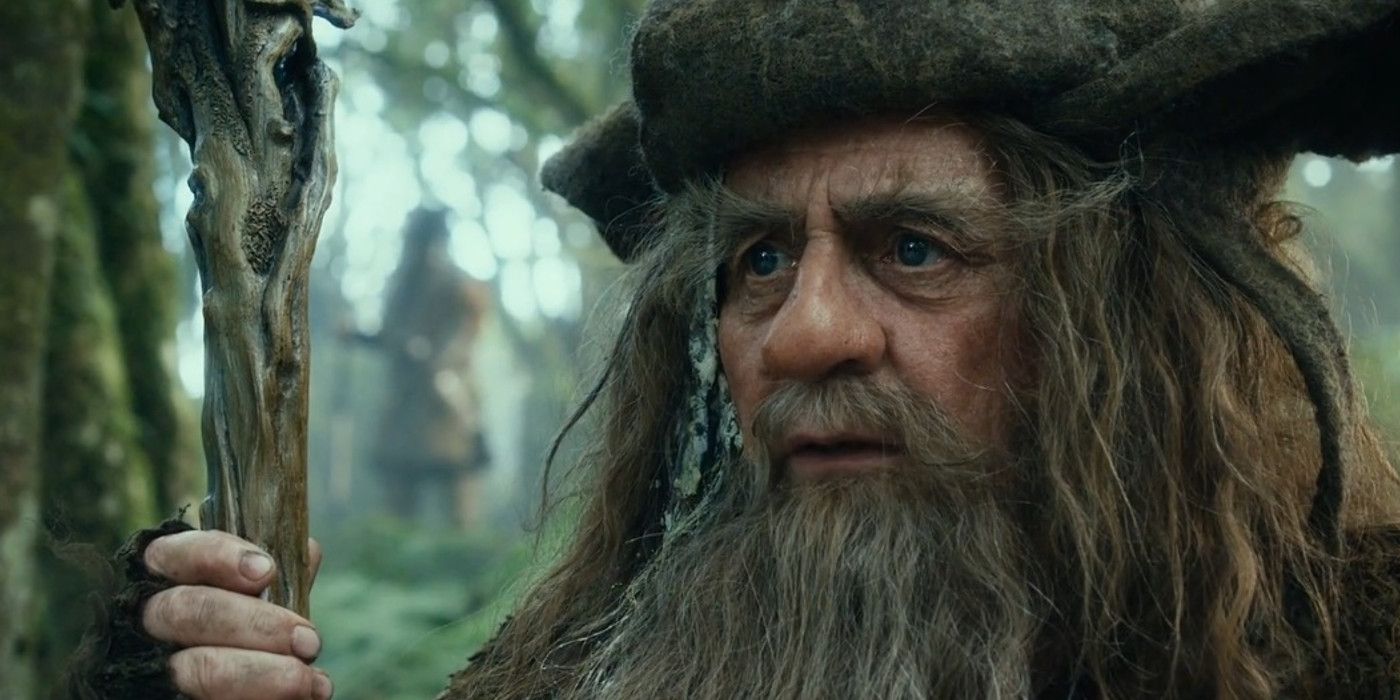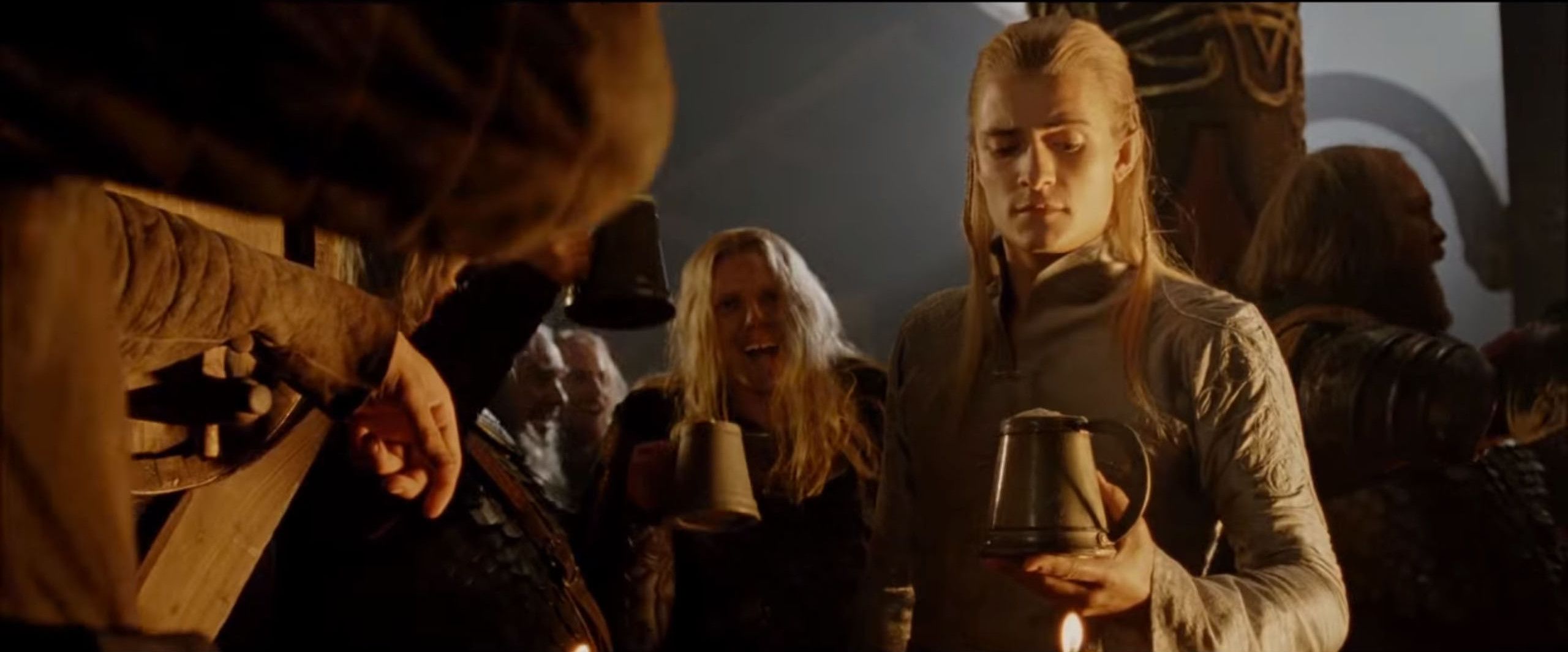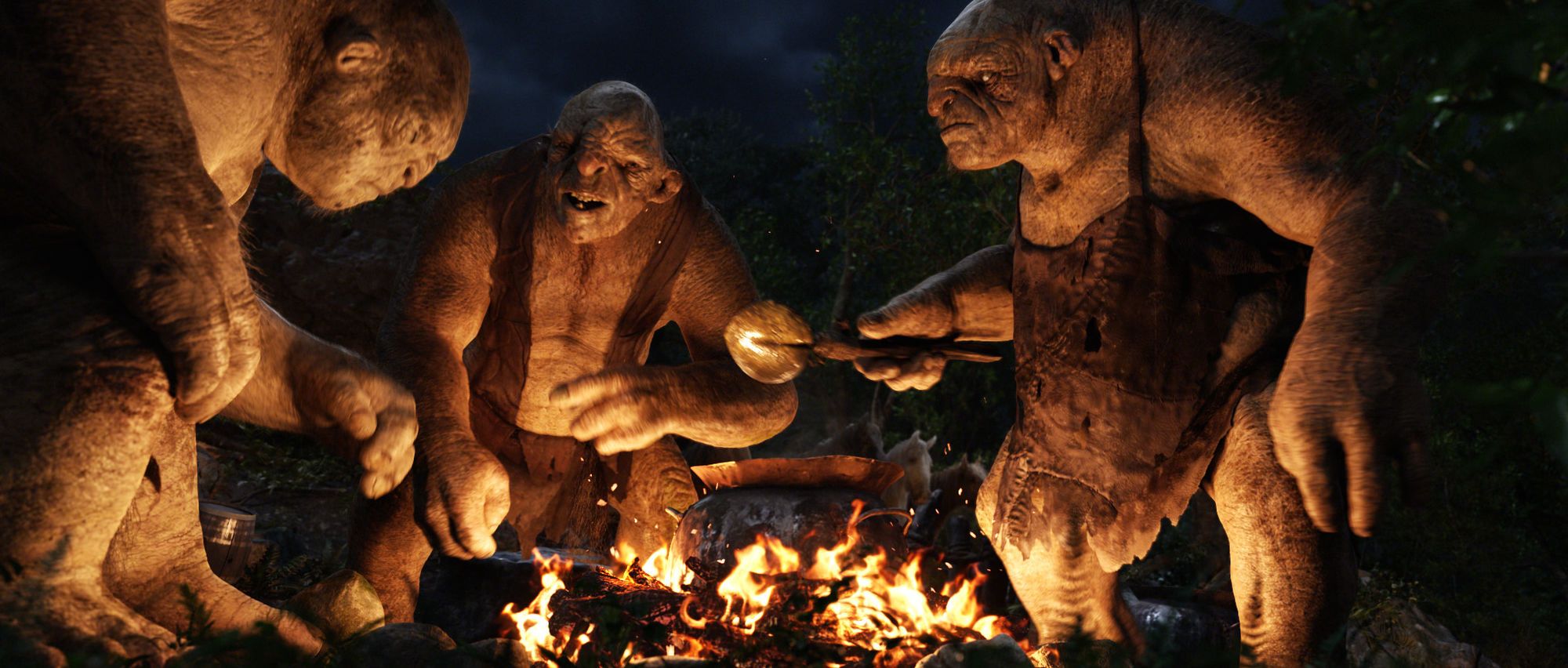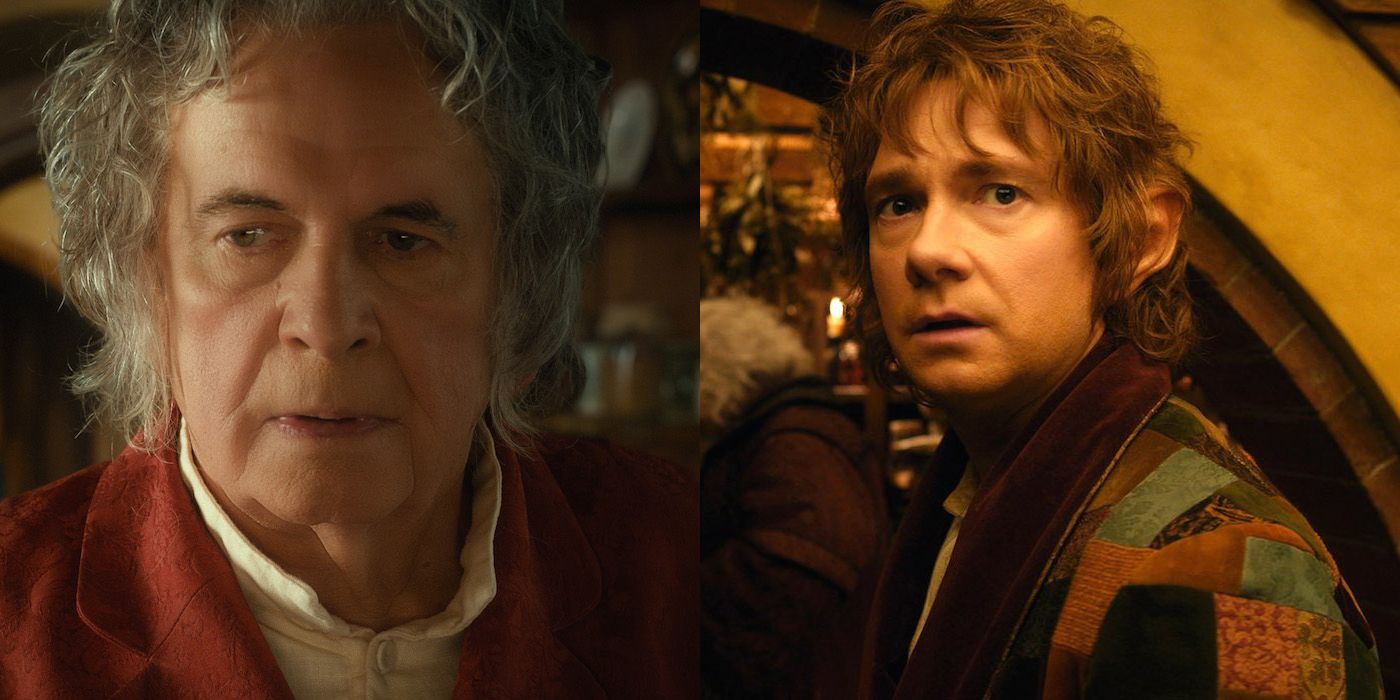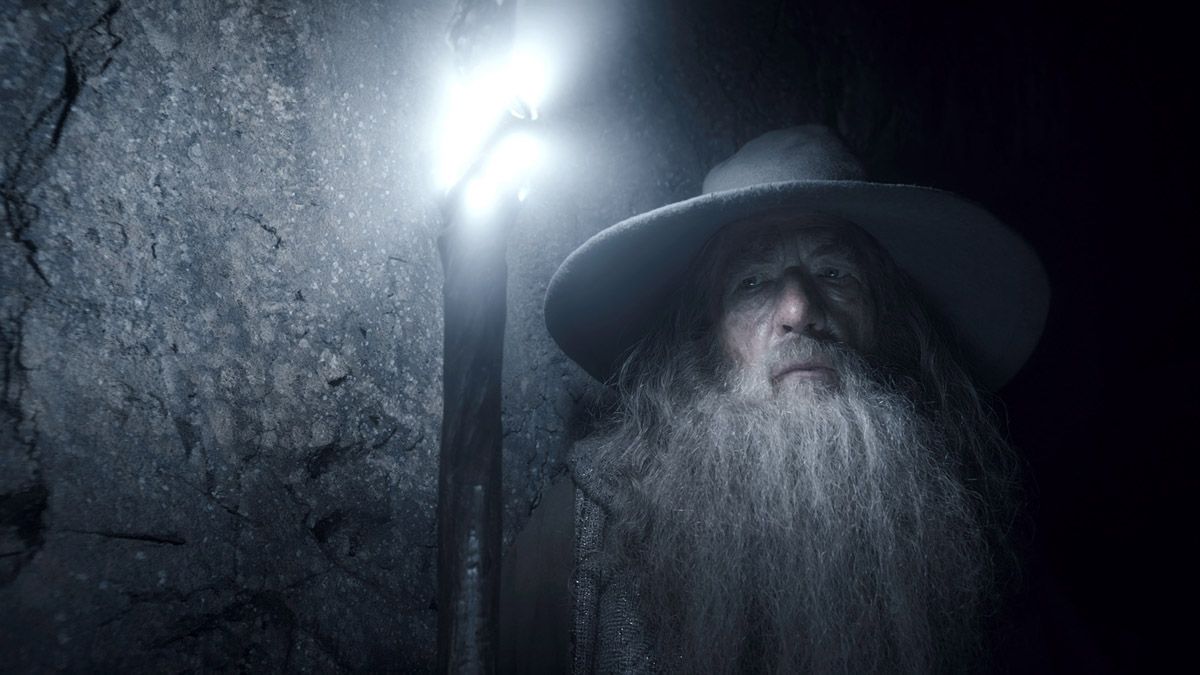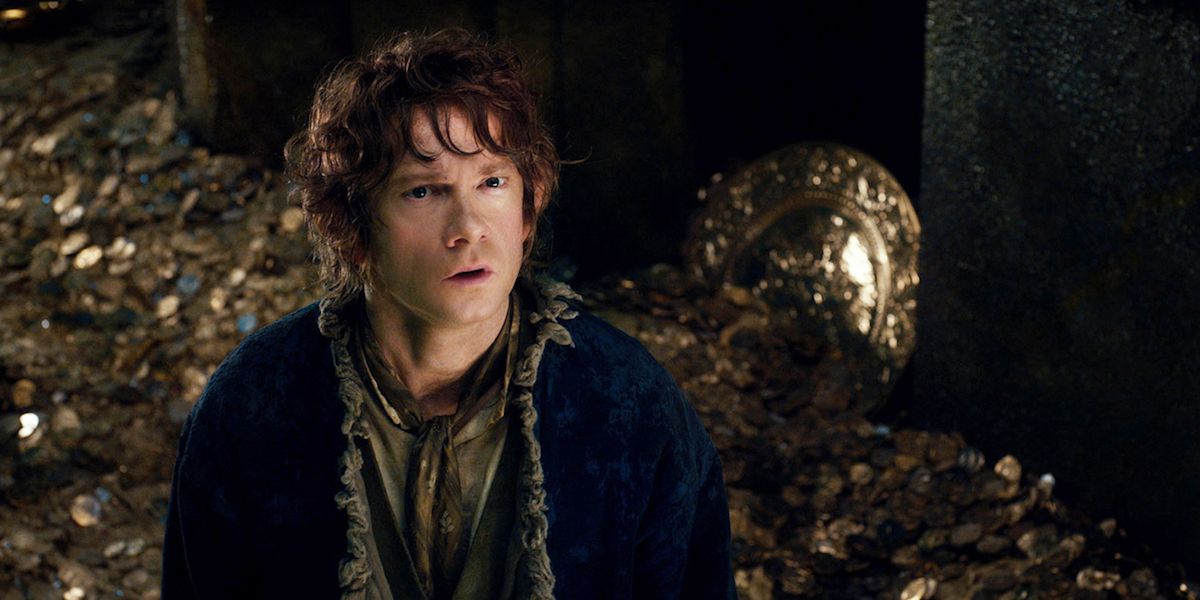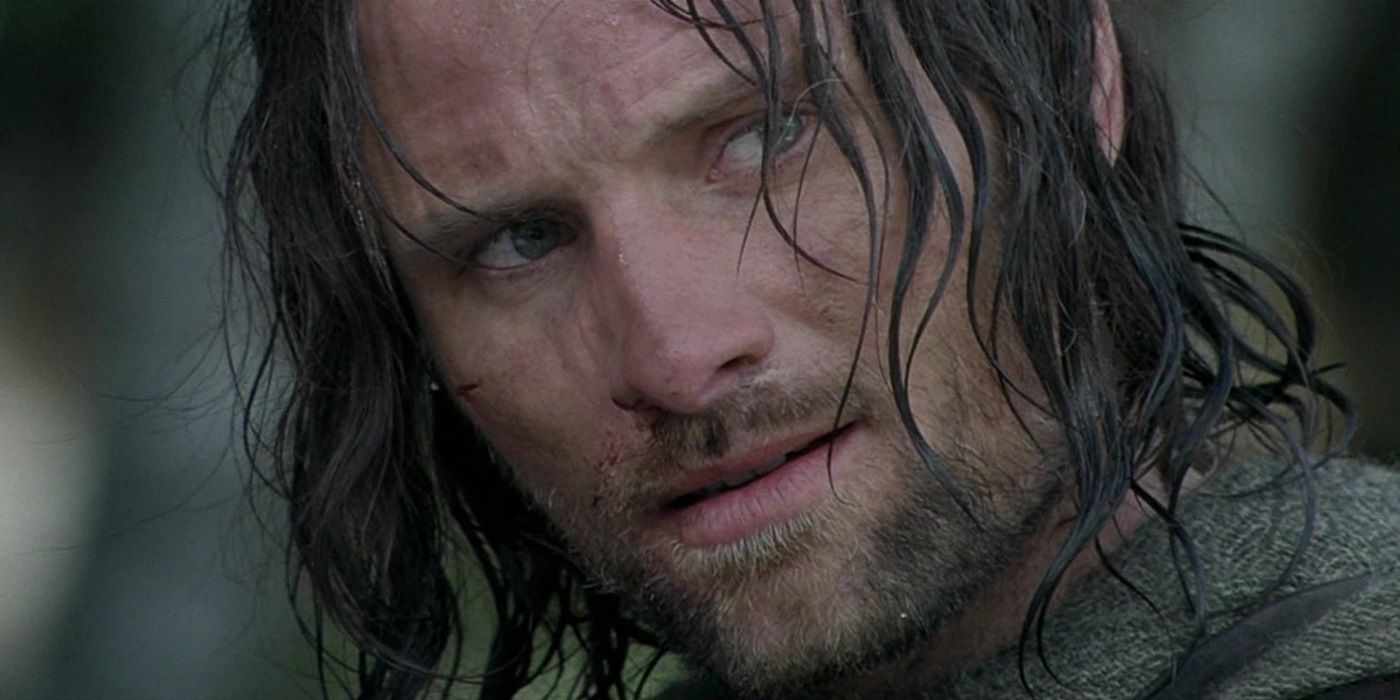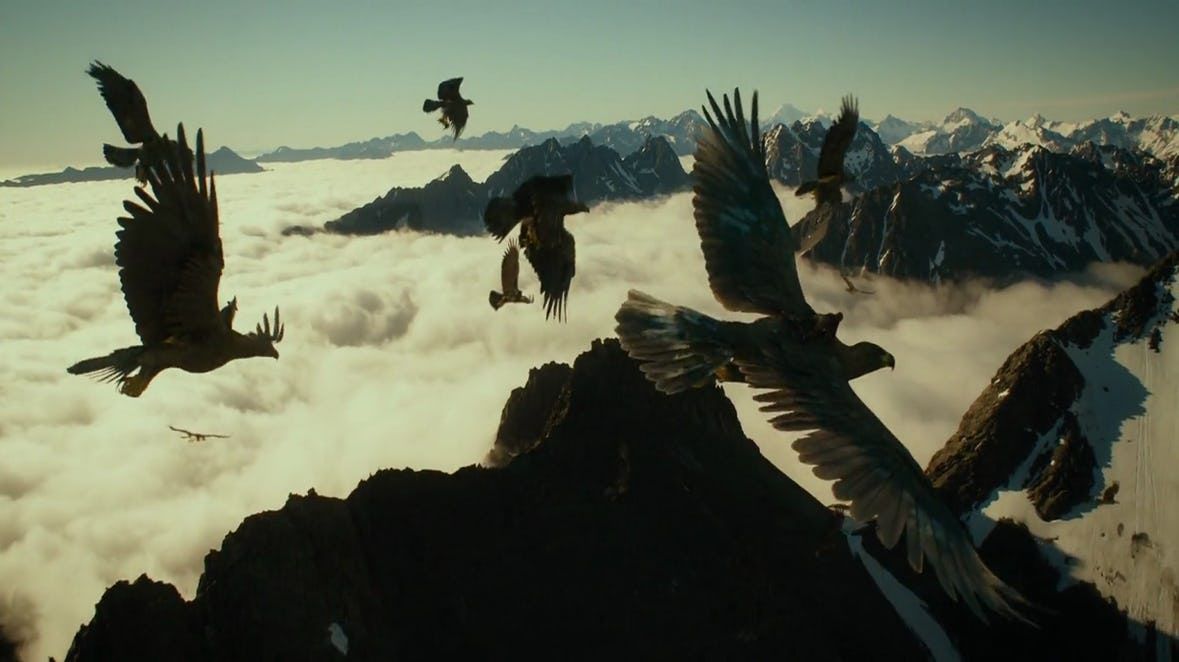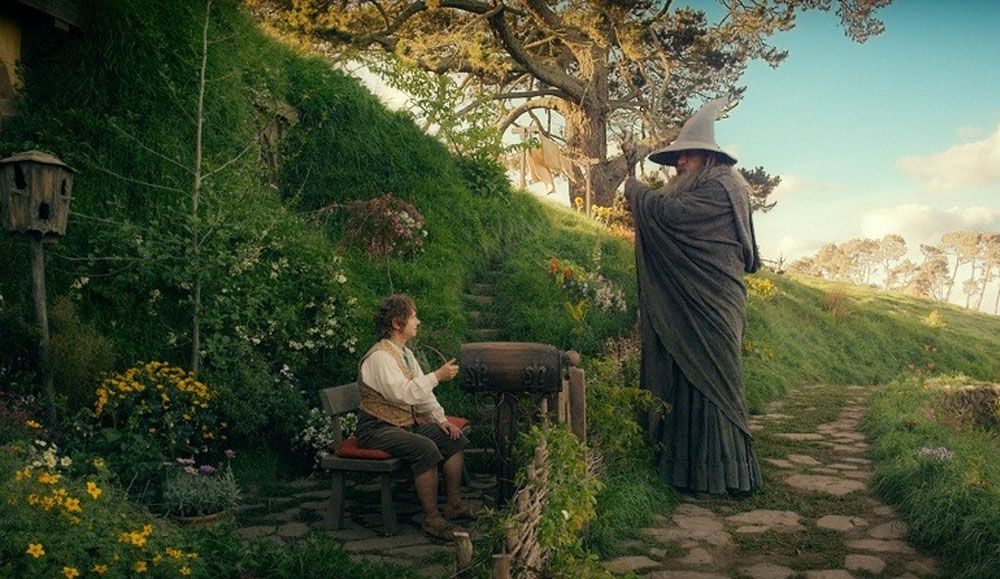Peter Jackson’s The Lord of the Rings films arguably constitute the finest fantasy trilogy ever made. Accessible to newcomers while remaining largely faithful to J.R.R. Tolkien's novels, The Lord of the Rings movies married incredible spectacle and stunning visuals with genuine, heartfelt emotion.
When it was announced that Jackson would return to Middle-earth to helm a prequel trilogy based around The Hobbit, fan expectations were understandably high. Unfortunately, although the The Hobbit films were wildly successful commercially, the reaction from audiences was far more lukewarm this time around.
The more charitable verdict is that – although the films have their moments – they’re a misguided attempt to transform a brief children’s tale into a sweeping saga for adults.
To be fair, Jackson had his work cut out for him, as the The Hobbit is a deceptively difficult book to adapt. In addition to its lighter, more juvenile tone, it also has 15 core cast members, 13 of whom are near-identical dwarves!
Nevertheless, other issues with the films seem avoidable – and chief among these is just how often they flat-out fail the logic test.
With this in mind, here are 20 Things That Make No Sense About The Hobbit Trilogy.
Smaug Is Aware Of Current Affairs In Middle-Earth
Up until his encounter with Bilbo in The Desolation of Smaug, the dragon Smaug is basically Middle-earth’s fire-breathing answer to Howard Hughes. He’s a super-rich shut-in who has zero contact with the outside world, content to hibernate on his stolen dwarvish riches like a gold-obsessed Yogi Bear.
Which makes it all the more surprising when – after emerging from his decades-long slumber – the evil worm displays a detailed knowledge of the current goings on outside his lair. Most unnervingly, Smaug intimates that he is aware (on some level at least) of dark lord Sauron’s plans for conquering Middle-earth.
To be honest, this should not be possible. True, Smaug is depicted in the original story as having mild telepathic powers (a knack for hypnosis, really), and it’s possible that Sauron communicated with him in this fashion while he slept. But we’re never told that this occurred, leaving Smaug’s knowledge a real headscratcher.
Gandalf Intentionally Walks Into Sauron’s Trap
Look, there’s brave and then there’s stupid. Gandalf knowingly walking into a trap set for him by Sauron definitely qualifies as stupid. Faced with the choice of waiting for fellow wizard Radagast to rally reinforcements or charging in alone to face an opponent whose powers far outstrip his own, he still chooses the latter!
This was reckless for several reasons. First of all, Gandalf is a valuable figure in the fight against the Enemy – so charging off solo on a high-risk mission is hardly a bright move. Secondly, he secretly carries with him Narya, the Elven ring of fire – hardly something that anyone wants falling into the dark lord’s grasp.
Sure, Gandalf didn’t have definitive proof that the Sauron himself was present, but he had a pretty big hunch this was the case. For a smart guy, Gandalf made a really dumb call on this occasion.
Thorin And Company win the war
There’s a moment in The Battle of the Five Armies where the outlook for the good guys looks grim, to say the least. The combined forces of Men, Elves, and Dwarves appear to be totally overwhelmed by the Orc hordes, and it’s hard to imagine they’ll hold out for much longer. But then Thorin Oakenshield and the Company take to the battlefield, inspiring those around them to find their second wind and continue the good fight a little longer.
Now, everyone loves a rousing battle charge, but a baker’s dozen of Dwarves – even Dwarves led by an inspirational king like Thorin – are unlikely to drastically alter the odds of such a one-sided engagement. Asking for realism in a fantasy film may sound a bit churlish, but at the end of the day, it’s hard to watch and not find yourself thinking just how preposterous this scene is.
Kili And Tauriel’s Insta-Love Romance
Romance moves faster in movies than it does in real life – it has to, given love can take months, years, or even decades to grow. But even taking into account this necessary compression, the time it takes Kili and Tauriel to fall for each other in The Hobbit trilogy doesn’t quite ring true. Taking the speed dating concept to a literal extreme, the two star-crossed lovers meet a mere two times before they start trading long, moody glances, which seems a bit outrageous!
We’re not saying there’s no reason that the pair couldn’t felt attraction during their brief moments together. After all, as Dwarves go, Kili is a rather handsome fellow (with roguish charm to spare), while Tauriel is brave, passionate, and drop-dead gorgeous, too. Yes, an attraction makes sense – but good luck trying to convince us it was anything more than that.
The Orcs Catch Up To The Company Far Too Soon
At the end of An Expected Journey, the Company is rescued from Azog the Defiler and his Orc minions by the Great Eagles (more on them later). The over-sized birds then carry Bilbo, Gandalf, Thorin, and the rest of the gang many miles away, leaving their attackers far behind them.
It’s a tad confusing that when The Desolation of Smaug kicks-off, the Orcs are now nipping at the Company’s heels once more!
Yes, Azog and his goons were mounted on their wolfish Warg mounts, which can cover ground at least as swiftly as a horse. However, we have a hard time accepting that they were able to close the gap between themselves and their quarry so soon, even saddled up as they were. Admittedly, having the Company start the movie under threat again makes for great drama – it just doesn’t make a lick of sense.
Gandalf Continually Bails On The Company
We’ve mentioned already that Jackson faced some storytelling hurdles when it came to adapting the story of The Hobbit for the big screen. A great example of this is how the director had to deal with Gandalf’s proclivity for ditching the Company whenever he feels the urge.
In fairness to Jackson and his screenwriting team, they do an admirable job of justifying the wizard’s repeated absences throughout the movies, tying it in to his quest for answers surrounding the Necromancer.
Yet there are limits to what even clever scripting to accomplish, and there are several points across the trilogy – like when Gandalf storms off in a huff in An Unexpected Journey – that paint the old codger as a bit of a flake. Indeed, the only conclusion viewers can draw is that Gandalf has overcommitted and should stick with the task at hand. Seriously: one thing at a time!
The Dwarves Try To Defeat Smaug With Gold
Let’s do a little recap here: Smaug is a dragon. Dragons breath fire, which they stoke within their belly. It stands to reason, then, that dragons like Smaug have very little to worry about when it comes to intense heat. Which begs the question – why did Thorin and the Company try to murder the overgrown lizard using molten gold?
Of course, Smaug’s scaly hide maybe isn’t as resistance to white-hot substances as his insides – you can tell from the gold evidently causing him at least some discomfort.
The molten gold was almost certainly never going to do enough damage to kill a dragon.
You only have to watch how effortlessly Smaug ultimately shrugs off his shiny new coating to appreciate just how boneheaded an idea this was.
Ringwraiths are zombies
Something both the book and film versions of The Lord of the Rings agree on is that Sauron’s most dreaded servants, the Nazgûl, were Men who eventually faded into a wraith-like form. As such, they never actually died in the traditional sense, but rather faded out of existence.
This is all turned on its head in The Hobbit trilogy, where we discover that the Ringwraiths apparently died a physical death prior to becoming spectres, with their chained bodies buried in enchanted tombs. Obviously, this totally contradicts the previously established continuity – however it’s easy to see why Jackson made this change.
After all, investigating the connection between the Necromancer and the Nazgûl provides Gandalf a halfway decent excuse to bail on the Company. Having the Ringwraiths be dead guys brought back to life also provides an explanation for Sauron’s Necromancer alias, which also doesn’t hurt.
Legolas’ Pointless Ride
For someone who doesn’t even appear in Tolkien’s original novel, Legolas makes a big impression in the Hobbit trilogy. This includes his showdown with Azog’s son, Bolg, when the latter leads a raid on Lake-town in The Desolation of Smaug.
After the pair fight to a stalemate, Bolg decides to hightail it, with Legolas in hot pursuit. With his jaw set determinedly and his horse at full gallop, you’d be forgiven for assuming that the next time we see the Elf prince, he’ll be throwing down with his ugly adversary.
Instead, when Legolas shows up in The Battle of the Five Armies, he’s back in the wilderness surrounding Lake-town, which makes his ride seem rather nonsensical, story-wise. Admittedly, lip service is paid to Legolas abandoning the chase when Bolg regrouped with the rest of his troops – although this seems out of character for an Orc-killing machine like him!
Saruman Goes After Sauron Alone
During the confrontation between the White Council – for the purposes of the movies: Galadriel, Elrond, Saruman and Gandalf – and Sauron in The Battle of the Five Armies, it’s made pretty clear that only Galadriel is a match for the Great Eye. Even then, it takes every bit of power the Lady of Lórien can muster – bolstered significantly by the magic of Eärendil's Light – to send Sauron packing.
Why then does Saruman – who had been cowering a moment earlier – volunteer to pursue the dark lord alone? Perhaps you could chalk this one up to the White Wizard’s growing arrogance – or even as being motivated by him now secretly desiring to ally himself with Sauron, now that he has seen his opponent’s true strength. E xactly what is going through Saruman’s head is left far too ambiguous, which means his decision doesn’t really stack up.
The Whole Point Of The Quest
As befits a story for children, Tolkien's novel sported a simple narrative: it’s about killing a dragon and reclaiming some stolen gold. Sure, plenty more happens, but at its heart, that’s all The Hobbit is about. Not so its cinematic counterpart, which offers many different reasons why the Company regaining the Lonely Mountain is such a big deal that things soon get very muddled.
It’s true that in fiction (as in life) people can have multiple rationales for doing something – but the sheer number of competing motivations becomes hard to keep straight. Is the point to reclaim the Arkenstone? To take back the home that the Dwarves lost? To vanquish Smaug, before he can join Sauron? Maybe it’s the Mountain’s strategic value?
It all makes us long for The Lord of the Rings’ streamlined plot – take the Ring to a volcano, throw it in – which was far easier to make sense of.
Radagast Goes AWOL
Some things in The Hobbit trilogy don't add up due to the context of the wider franchise. Take Radagast the Brown, who plays an active role in the prequels, yet is nowhere to be found in the The Lord of the Rings trilogy. It seems more than a little baffling that a wizard committed to the defence of Middle-earth wouldn’t show up for the main event!
Defenders will be quick to point out that Radagast is the one who sent the Great Eagles at different times during the War of the Ring, and that he was probably off fighting the good fight in the North during the events of the sequel films. All the same, it still seems like this nature-loving wizard sat on the sidelines in the final three films, which is pretty hard to swallow.
It Turns Out Elves Can get tipsy
This entry revolves around a minor continuity breach that will only rankle hardcore fans familiar with the “Extended Edition” versions of Jackson’s films. If you’re reading this list, there’s a good chance that includes you.
Anyway, the issue here is that in the even longer cut of The Return of the King, we learn – via a drinking contest held between Legolas and Gimli – that Elves cannot get drunk. Which makes it all the more surprising when, in The Desolation of Smaug, we see several Elves – Legolas’ Woodland kin, no less! – get so hammered they actually pass out.
Granted, Jackson needed to depict intoxicated elves in order to remain faithful to Tolkien’s novel.
Maybe the real problem here is that he didn’t hew closer to the established canon when devising the drinking contest originally, the absence of which would render this goof a moot point.
The Trolls Steal The Company’s Ponies Unnoticed
When you hear the word “troll”, chances are you think “massive”, “lumbering”, and “unsubtle” (among other things). Conversely, you’re hardly likely to consider terms like “stealthy” or “sneaky”. That’s because these gigantic brutes are maybe the least capable creatures of performing a task unnoticed in all of Middle-earth – except for that time that three of them did!
This inexplicable occurrence took place during An Unexpected Journey, when a trio of trolls manage to steal the Company’s ponies from right under their noses without drawing any attention to themselves at all.
Again, at least part of the blame for this implausible scenario can be apportioned to the book itself – where things play out pretty much the same – and yes, we’re being more than a little nitpicky. Regardless, trolls with ninja-like skills definitely do not make sense.
Bilbo Clearly HAS Aged A Day Between Trilogies
When we’re first properly introduced to Bilbo in The Fellowship of the Ring, he’s possessed the One Ring for 60 years, and much is made of the fact that he hasn’t physically aged a day as a result. Fast-forward (or should that be “rewind”?) to the Hobbit trilogy, and this concept is thrown on the trash heap.
Here, the elder incarnation of Bilbo – as portrayed by Ian Holm – is visibly older than his younger self, played by Martin Freeman. Of course, the prosaic reason behind this continuity hiccup is that Jackson needed to recast the Holm with a more sprightly actor.
Rather than simply gloss over this obvious discontinuity, the director leans into it – Bilbo even marvels at a sketch of his line-free face at one point! This means that when Gandalf later remarks on Bilbo’s supernatural vitality, the audience is left wondering what he could possibly mean.
Gandalf’s Powers Are Wildly Inconsistent
Look, we get it: the supernatural abilities of any character in a fantasy book or film almost always increase and decrease in strength without any rational explication being given. On a certain level, this has to happen – for tension to exist, a magically-gifted character needs to be as powerful (or powerless) as the story dictates at the present moment.
We understand why Gandalf’s spellcasting prowess drastically ebbs and flows across the Hobbit trilogy – at its zenith, producing mighty shockwaves, and at its nadir, flaming pine cones. That doesn’t mean that the wizard’s patchy magical track record – here or in The Lord of the Rings trilogy, for that matter – makes any sense, at least from an in-universe perspective.
Why Does Bilbo Decide To Join The Company?
In Tolkien's novel, it’s clear why Bilbo decides to throw his lot in with Thorin and co. He does it out of wounded pride after the Dwarves ridicule the hobbit’s charmed lifestyle.
It’s less obvious why Master Baggins joins up in An Unexpected Journey, to the extent of being downright perplexing.
Sure, it’s hinted at that Gandalf woke Bilbo’s dormant sense of adventure after browbeating him about his bookish ways and recalling tales of his outlandish ancestor, Bullroarer Took. Yes, Bilbo himself later suggests he tagged along out of sympathy for the Dwarves’ plight – eager to help them reclaim the same sense of home he holds dear. Even so, it’s hard to ignore the fact the Bilbo went to bed the night before the Company set out steadfastly against joining their number, only to do a sudden 360 degree turn in the morning, which doesn’t really hold water.
Legolas Is Sent To Meet Strider
This is more a gripe for fans of Tolkien’s books, but when Legolas’ father King Thranduil bids his son to seek out Strider during the dénouement of The Battle of the Five Armies, it’s a bizarre piece of advice. Why? Well, according to the timeline established by Professor Tolkien, during the events of The Hobbit, Strider (otherwise known as Aragorn) would only have been 10 years old.
The easiest way to explain this logical stumbling block – other than to suggest that Thranduil wanted Legolas to try his hand at babysitting duties – is to accept that Jackson’s movies clearly operate on a different timeline than the novels. Regardless, it represents a needless and somewhat clunky attempt to connect both trilogies, and was probably best left on the cutting room floor.
The Eagles Only Carry The Company To The Carrock
Ah, the Great Eagles of Middle-earth: everyone’s favorite deus ex machina and plothole all rolled into one. Not only do these humongous birds have a knack for showing up to bail our heroes out of otherwise-inescapable jams, they also staunchly refused to provide prior assistance that would have avoided said jams in the first place!
Remember how the Eagles swooped in to save the Company’s bacon at the end of An Unexpected Journey, transporting them safely to the Carrock? Well, what we want to know is: why did they have to stop there? Of course, according to Tolkien’s canon, the Great Eagles are a proud species who prefer to stay out of the affairs of Men, Elves, and Dwarves (only intervening out of affection for Gandalf).
But really, would it have been so hard to carry the Company the rest of the way to the Lonely Mountain?
Why Was Gandalf So Eager To Recruit Bilbo?
The quest to reclaim the Lonely Mountain from the dragon Smaug was always going to be fraught with danger – even for seasoned warriors like Thorin and the Company.
Why on Middle-earth was Gandalf so set on drafting the decidedly indoorsy Bilbo into their ranks?
True, the wizard does offer up some vague explanations to Galadriel when the Lady of Light (justifiably) queries his motives in Rivendell. But despite delivering a heartfelt and beautiful speech about the virtues of the everyman (or hobbit), even Gandalf admits he doesn’t really have a concrete answer to the question.
As a result, it’s hard for audiences to comprehend exactly why Bilbo was recruited as the Company’s specialist burglar, especially given the inherent risks involved. Gandalf supposedly considers himself the hobbit’s friend – in which case, Bilbo really needs to get himself some new pals!
---
What other things about The Hobbit trilogy make no sense? Let us know in the comments!

